Shadow Play: The Evolution of Shadow Puppetry & Film in Australia, Cambodia, China, Taiwan, Europe, India, Indonesia, Malaysia, Thailand, Turkey
Shadow play, also known as shadow puppetry, is an ancient form of storytelling that uses the manipulation of shadows to create the illusion of moving images. This art form has a rich history, and it has played a significant role in the evolution of film and movie.
The origins of shadow play can be traced back to ancient China, where it was used as a form of storytelling and entertainment. The art form quickly spread to other parts of the world, and by the 19th century, it had become a popular form of entertainment in Europe. Performers would use cut-out figures made of leather or paper, and held them up against a backlit screen to create the illusion of movement.
Shadow play has played a crucial role in the development of film and movie. It was one of the first forms of visual storytelling that used the principle of persistence of vision. This principle states that if an image is displayed for a short period of time, the human brain will perceive it as continuous motion. This was the foundation for the development of motion pictures.
The technology used in shadow play was also an inspiration for the development of early film cameras and projection systems. Inventors such as Eadweard Muybridge and Louis Le Prince were influenced by the principles of shadow play, and they developed cameras that could capture and record motion. This laid the foundation for the development of motion picture cameras and projection systems, which would eventually lead to the creation of the first motion pictures.
Shadow play also had a significant impact on the field of animation. It was one of the first forms of animation, and it laid the foundation for the development of the medium. The manipulation of shadows to create the illusion of movement was the precursor to modern animation techniques, such as cel animation and stop-motion animation.
Despite its significance in the history of film and movie, shadow play is often overlooked and forgotten. It is not as well-known as other early optical devices, such as the Phenakistoscope and the Magic Lantern. However, its impact on the medium of film and animation cannot be denied. It was a significant innovation in its time and its legacy continues to influence the medium even today.
In recent years, shadowplay has experienced a resurgence in popularity as a form of contemporary art and performance. Artists and performers are using new technology and techniques to push the boundaries of what is possible with shadow play. This includes the use of digital projection, animation software and interactive elements, which allows for a more dynamic and immersive experience.
One example of this is the work of American artist Koryn Rolstad, who combines traditional shadow play techniques with modern technology to create unique and visually stunning performances. Another example is Belgian artist Théâtre de l'Ombre CHINE, who creates large-scale shadow performances using traditional Chinese shadow puppetry techniques.
In conclusion, shadow play or shadow puppetry is a hidden root of film and movie. It has played a crucial role in the development of motion pictures and animation. Despite its significance, it is often overlooked and forgotten. It is an important part of film history and its legacy continues to influence the medium even today. With the help of new technologies, shadow play is experiencing a resurgence in popularity and continues to evolve as an art form.
In recent years, there has been a renewed interest in Indigenous shadow play in Australia, and it is now being used as a means of preserving and promoting Indigenous culture. Many Indigenous artists and performers are now using shadow play as a way to connect with their cultural heritage and share it with the wider community. This includes the use of digital projection and animation software to create new and innovative performances.
For example, the company Ilbijerri Theatre Company which is based in Melbourne, Australia and is run by Indigenous Australians, they use shadow play in their performances to tell stories of Indigenous culture and history. Another example is the artist Kyle Jenkins, a Wiradjuri man who creates shadow puppets using traditional techniques and materials, but also incorporates digital technology to create interactive performances.
Overall, shadow play has played a significant role in the cultural history of Australia, particularly among Indigenous peoples, and it continues to be an important part of contemporary Indigenous art and performance.
The traditional shadow puppets used in sbek Thom performances are made from cow or buffalo hide, and are meticulously crafted by skilled artisans. The puppets are typically around 30cm tall and are manipulated by puppeteers behind a white screen, using a single light source to create the shadows.
Sbek Thom performances were once a popular form of entertainment in Cambodia, but the Khmer Rouge regime and the subsequent civil war in the 1970s and 1980s had a devastating impact on the art form. Many puppeteers and artisans were killed or forced to flee the country, and the traditional skills and knowledge were almost lost.
However, in recent years, there has been a resurgence of interest in sbek Thom, and efforts are being made to preserve and promote the art form. Non-profit organizations and foundations such as Cambodian Living Arts are working to revive traditional shadow puppetry and promote its cultural heritage. Many young Cambodians are now learning the skills and techniques of sbek Thom, and traditional performances are once again becoming a popular form of entertainment.
In addition to the traditional performances, modern plays and performances using the shadow puppets are also being created to attract the new generations and to show the continuity of the art.
In conclusion, shadow play, or sbek Thom, has a long and rich history in Cambodia. Despite the devastating impact of war and political turmoil, efforts are being made to preserve and promote the art form, and it continues to play an important role in Cambodian culture and entertainment.
Shadow play, also known as "piying xi" in China, has a rich and storied history in the country. According to myths and legends, it is said that Chinese shadow puppetry originated during the Han dynasty when the favorite concubine of Emperor Wu died and a magician promised to raise her spirit. The emperor could see a shadow that looked like her move behind the curtains that the magician had placed around some lit torches. It is often told that the magician used a shadow puppet, but there is no clear evidence to support this claim.
Although there are many earlier records of all kinds of puppetry in China, clear mention of Chinese shadow play does not occur until the Northern Song dynasty (960–1127). Shadow theatre became quite popular during this time and it was a common form of entertainment during holidays. During the Ming dynasty, there were 40 to 50 shadow show troupes in the city of Beijing alone. The earliest shadow theatre screens were made of mulberry paper and the stories were mostly based on history and half fact half fiction, but comedies were also performed.
Today, Chinese shadow puppetry is still performed and it's puppets are made of leather and moved on sticks, used to tell dramatic versions of traditional fairy tales and myths. In Gansu province, it is accompanied by Daoqing music, while in Jilin, accompanying Huanglong music forms some of the basis of modern opera. Chinese shadow puppetry was showcased in the 1994 Zhang Yimou film To Live.
Overall, Chinese shadow play has a deep cultural and historical significance in China. Despite the changes in technology and entertainment, it still continues to be an important art form and a way for people to understand their cultural heritage.
Taiwan's shadow puppetry, also known as "leather monkey shows" or "leather shows," has its origins in the Chaochow school of shadow puppet theatre. The art form was popular in Tainan, Kaohsiung, and Pingtung as early as the Qing dynasty (1644–1911 A.D.). According to older puppeteers, there were at least seventy shadow puppet troupes in the Kaohsiung area alone in the closing years of the Qing.
In Europe, the origins of shadow play can be traced back to ancient Greece, with Plato's allegory of the cave in which Socrates described a kind of shadow play with figures made out of stone, wood, or other materials presented to prisoners who could only see the shadows on the wall in front of them. This imaginative illustration of ideas about the relationship between knowledge, education, and a truthful understanding of reality.
Shadow plays started spreading throughout Europe at the end of the 17th century, probably via Italy. In 1675 German polymath and philosopher Gottfried Wilhelm Leibniz imagined a kind of world exhibition that would show all kinds of new inventions and spectacles, including shadow theatre.
French missionaries brought the shadow show from China to France in 1767 and put on performances in Paris and Marseilles, causing quite a stir. In time, the ombres chinoises (French for "Chinese shadows") with local modification and embellishment, became the ombres françaises and struck root in the country.
The popularity of ombres chinoises reflected the chinoiserie fashion of the days. The art was a popular entertainment in Paris during the 19th century, especially in the famous Paris nightclub district of Montmartre. The cabaret Le Chat Noir produced 45 Théatre d'ombres shows between 1885 and 1896 under the management of Rodolphe Salis.
The art of shadow play also had a significant influence on the development of phantasmagoria and other forms of early cinema. Today, shadow play is still a popular form of entertainment in various cultures, with notable variations in China, Taiwan, and other parts of Asia, and continues to be an important precursor to the development of film and movie.
In India, shadow puppetry is known by various names such as keelu bomme, Tholu bommalata, Togalu gombeyaata, charma bahuli natya, Ravana chhaya, Tholpavakoothu, and thol bommalatta. These shadow plays are an ancient part of India's culture and have a rich tradition in different regions of the country. Shadow puppetry is also found in pictorial traditions in India such as temple mural painting, loose-leaf folio paintings, and narrative paintings.
In the 19th century and early parts of the 20th century, Indologists believed that shadow puppet plays had become extinct in India. However, in the 1930s, it was found that shadow puppetry had remained a vigorous rural tradition in central Kerala, Karnataka, Andhra Pradesh, Tamil Nadu, Odisha, and southern Maharashtra. The Ramayana and Mahabharata legends dominate the repertoire of shadow puppetry plays in India. The process of making the puppets is an elaborate ritual, where the artist families in India pray, go into seclusion, produce the required art work, and then celebrate the "metaphorical birth of a puppet" with flowers and incense.
In Indonesia, shadow puppet theatre is known as wayang, and is particularly popular on the islands of Java and Bali. The wayang kulit style, which uses thin perforated leather sheets made from buffalo skin, is particularly well-known. Performances typically take place at night and feature a puppet master, gamelan players, and choral singers. In 2003, UNESCO designated wayang kulit as a Masterpiece of the Oral and Intangible Heritage of Humanity.
Shadow play in Malaysia, also known as wayang kulit, is a traditional form of storytelling that features puppets made of leather and manipulated with sticks or buffalo horn handles. The stories presented are usually mythical and morality tales, with an educational moral to the plays, which usually portray a battle.
This form of shadow play is influenced by the wayang kulit of both Thailand and Java, Indonesia, with slight differences in the stories and performances. In the northern states of Malaysia, the wayang kulit is more similar to Thai shadow puppets, while in the southern Malay peninsula, especially in Johor, it is borrowed from Javanese Indonesian wayang kulit. The shadows are cast using an oil lamp or, in modern times, a halogen light, onto a cotton cloth background and it is often associated with gamelan music.
Nang yai shadow plays in Thailand are known for their large-scale puppets, which can measure up to two meters in height. The puppets are made from cowhide and are manipulated with sticks to create the illusion of movement. The stories told in nang yai performances are typically based on Thai folklore and myths, and are accompanied by traditional songs and chants.
The tradition of nang yai shadow plays can be traced back to the Ayutthaya period (1351-1767), and it has been an important part of Thai culture for centuries. However, in 1960, a fire at the national theatre caused a temporary suspension of nang yai performances. Nevertheless, the tradition has managed to survive and continue to be enjoyed by audiences today.
The influence of nang yai shadow plays can also be seen in modern Thai cinema, with filmmakers like Cherd Songsri and Payut Ngaokrachang drawing inspiration from the traditional art form. The plays are not just a cultural heritage but also a reflection of the Thai society, it's culture and its belief system. The plays are still performed in some parts of Thailand and is a major tourist attraction in the country.
In Turkey, a bawdy comedy tradition of shadow play called Karagöz and Hacivat was widespread throughout the Ottoman Empire, possibly since the late 14th century. It centered around the contrasting interaction between the figures Karagöz, an unprincipled peasant and Hacivat, his fussy, educated companion, and represented all the major social groups in Ottoman culture.
The shows were performed in coffee houses and private houses, and even before the sultan, and had an enormous following. Puppets were made of horse, water buffalo or calf skin and were oiled to make them translucent, and were jointed with waxed thread at the neck, arms, waist and knees and manipulated from rods in their back. The tradition of Karagöz and Hacivat shadow play was also adapted in Egypt and North Africa.
Shadow puppetry continues to be popular today, with various forms of the art being performed in different parts of the world. Some contemporary artists have incorporated new technology, such as laser-cut objects and 3-D puppets, into their performances. Additionally, it is also used in popular culture such as Broadway musicals, children's television shows, films, and video games. Shadow puppetry can also be found in museums and cultural centers, such as the Center for Puppetry Arts in Atlanta, Georgia, which has an extensive collection of Chinese shadow puppets. It also appears in music videos and other forms of media. Overall, shadow puppetry has evolved to include new technologies and styles while still preserving traditional techniques and stories.
The origins of shadow play can be traced back to ancient China, where it was used as a form of storytelling and entertainment. The art form quickly spread to other parts of the world, and by the 19th century, it had become a popular form of entertainment in Europe. Performers would use cut-out figures made of leather or paper, and held them up against a backlit screen to create the illusion of movement.
Shadow play has played a crucial role in the development of film and movie. It was one of the first forms of visual storytelling that used the principle of persistence of vision. This principle states that if an image is displayed for a short period of time, the human brain will perceive it as continuous motion. This was the foundation for the development of motion pictures.
The technology used in shadow play was also an inspiration for the development of early film cameras and projection systems. Inventors such as Eadweard Muybridge and Louis Le Prince were influenced by the principles of shadow play, and they developed cameras that could capture and record motion. This laid the foundation for the development of motion picture cameras and projection systems, which would eventually lead to the creation of the first motion pictures.
Shadow play also had a significant impact on the field of animation. It was one of the first forms of animation, and it laid the foundation for the development of the medium. The manipulation of shadows to create the illusion of movement was the precursor to modern animation techniques, such as cel animation and stop-motion animation.
Despite its significance in the history of film and movie, shadow play is often overlooked and forgotten. It is not as well-known as other early optical devices, such as the Phenakistoscope and the Magic Lantern. However, its impact on the medium of film and animation cannot be denied. It was a significant innovation in its time and its legacy continues to influence the medium even today.
In recent years, shadowplay has experienced a resurgence in popularity as a form of contemporary art and performance. Artists and performers are using new technology and techniques to push the boundaries of what is possible with shadow play. This includes the use of digital projection, animation software and interactive elements, which allows for a more dynamic and immersive experience.
One example of this is the work of American artist Koryn Rolstad, who combines traditional shadow play techniques with modern technology to create unique and visually stunning performances. Another example is Belgian artist Théâtre de l'Ombre CHINE, who creates large-scale shadow performances using traditional Chinese shadow puppetry techniques.
In conclusion, shadow play or shadow puppetry is a hidden root of film and movie. It has played a crucial role in the development of motion pictures and animation. Despite its significance, it is often overlooked and forgotten. It is an important part of film history and its legacy continues to influence the medium even today. With the help of new technologies, shadow play is experiencing a resurgence in popularity and continues to evolve as an art form.
Shadow play Australia.
Shadow play also has a rich history in Australia, where it has been an important part of Indigenous storytelling and culture for thousands of years. The Indigenous peoples of Australia have been using shadow play as a way to pass down stories, history, and cultural traditions for generations. They use various materials such as bark and leaves to create intricate shadow puppets, and perform them in front of a fire to create the shadows.
In recent years, there has been a renewed interest in Indigenous shadow play in Australia, and it is now being used as a means of preserving and promoting Indigenous culture. Many Indigenous artists and performers are now using shadow play as a way to connect with their cultural heritage and share it with the wider community. This includes the use of digital projection and animation software to create new and innovative performances.
For example, the company Ilbijerri Theatre Company which is based in Melbourne, Australia and is run by Indigenous Australians, they use shadow play in their performances to tell stories of Indigenous culture and history. Another example is the artist Kyle Jenkins, a Wiradjuri man who creates shadow puppets using traditional techniques and materials, but also incorporates digital technology to create interactive performances.
Overall, shadow play has played a significant role in the cultural history of Australia, particularly among Indigenous peoples, and it continues to be an important part of contemporary Indigenous art and performance.
Shadow play Cambodia.
Shadow play, also known as "sbek Thom" in Cambodia, has a long and rich history in the country. It is a traditional form of storytelling and entertainment that has been passed down for generations. Sbek Thom performances typically feature stories from the Hindu epics, such as the Ramayana and the Mahabharata, as well as stories from Cambodian folklore and legends.
The traditional shadow puppets used in sbek Thom performances are made from cow or buffalo hide, and are meticulously crafted by skilled artisans. The puppets are typically around 30cm tall and are manipulated by puppeteers behind a white screen, using a single light source to create the shadows.
Sbek Thom performances were once a popular form of entertainment in Cambodia, but the Khmer Rouge regime and the subsequent civil war in the 1970s and 1980s had a devastating impact on the art form. Many puppeteers and artisans were killed or forced to flee the country, and the traditional skills and knowledge were almost lost.
However, in recent years, there has been a resurgence of interest in sbek Thom, and efforts are being made to preserve and promote the art form. Non-profit organizations and foundations such as Cambodian Living Arts are working to revive traditional shadow puppetry and promote its cultural heritage. Many young Cambodians are now learning the skills and techniques of sbek Thom, and traditional performances are once again becoming a popular form of entertainment.
In addition to the traditional performances, modern plays and performances using the shadow puppets are also being created to attract the new generations and to show the continuity of the art.
In conclusion, shadow play, or sbek Thom, has a long and rich history in Cambodia. Despite the devastating impact of war and political turmoil, efforts are being made to preserve and promote the art form, and it continues to play an important role in Cambodian culture and entertainment.
Shadow play China.
Shadow play, also known as "piying xi" in China, has a rich and storied history in the country. According to myths and legends, it is said that Chinese shadow puppetry originated during the Han dynasty when the favorite concubine of Emperor Wu died and a magician promised to raise her spirit. The emperor could see a shadow that looked like her move behind the curtains that the magician had placed around some lit torches. It is often told that the magician used a shadow puppet, but there is no clear evidence to support this claim.
Although there are many earlier records of all kinds of puppetry in China, clear mention of Chinese shadow play does not occur until the Northern Song dynasty (960–1127). Shadow theatre became quite popular during this time and it was a common form of entertainment during holidays. During the Ming dynasty, there were 40 to 50 shadow show troupes in the city of Beijing alone. The earliest shadow theatre screens were made of mulberry paper and the stories were mostly based on history and half fact half fiction, but comedies were also performed.
Today, Chinese shadow puppetry is still performed and it's puppets are made of leather and moved on sticks, used to tell dramatic versions of traditional fairy tales and myths. In Gansu province, it is accompanied by Daoqing music, while in Jilin, accompanying Huanglong music forms some of the basis of modern opera. Chinese shadow puppetry was showcased in the 1994 Zhang Yimou film To Live.
Overall, Chinese shadow play has a deep cultural and historical significance in China. Despite the changes in technology and entertainment, it still continues to be an important art form and a way for people to understand their cultural heritage.
Shadow play Taiwan.
Taiwan's shadow puppetry, also known as "leather monkey shows" or "leather shows," has its origins in the Chaochow school of shadow puppet theatre. The art form was popular in Tainan, Kaohsiung, and Pingtung as early as the Qing dynasty (1644–1911 A.D.). According to older puppeteers, there were at least seventy shadow puppet troupes in the Kaohsiung area alone in the closing years of the Qing.
Traditionally, the eight to twelve-inch puppet figures, and the stage scenery and props such as furniture, natural scenery, pagodas, halls, and plants, are all cut from leather. As shadow puppetry is based on light penetrating through a translucent sheet of cloth, the "shadows" are actually silhouettes seen by the audience in profile or face on. Taiwan's shadow plays are accompanied by Chaochow melodies which are often called "priest's melodies" owing to their similarity with the music used by Taoist priests at funerals.
A large repertoire of some 300 scripts of the southern school of drama used in shadow puppetry and dating back to the fourteenth and fifteenth centuries has been preserved in Taiwan and is considered to be a priceless cultural asset. Taiwan's shadow play still continues to be an important art form and a way for people to understand their cultural heritage. The unique characteristics of Taiwan's shadow play, such as the use of Chaochow melodies, makes it different from other forms of shadow play found in other parts of the world.
Shadow play Europe.
In Europe, the origins of shadow play can be traced back to ancient Greece, with Plato's allegory of the cave in which Socrates described a kind of shadow play with figures made out of stone, wood, or other materials presented to prisoners who could only see the shadows on the wall in front of them. This imaginative illustration of ideas about the relationship between knowledge, education, and a truthful understanding of reality.
Shadow plays started spreading throughout Europe at the end of the 17th century, probably via Italy. In 1675 German polymath and philosopher Gottfried Wilhelm Leibniz imagined a kind of world exhibition that would show all kinds of new inventions and spectacles, including shadow theatre.
French missionaries brought the shadow show from China to France in 1767 and put on performances in Paris and Marseilles, causing quite a stir. In time, the ombres chinoises (French for "Chinese shadows") with local modification and embellishment, became the ombres françaises and struck root in the country.
The popularity of ombres chinoises reflected the chinoiserie fashion of the days. The art was a popular entertainment in Paris during the 19th century, especially in the famous Paris nightclub district of Montmartre. The cabaret Le Chat Noir produced 45 Théatre d'ombres shows between 1885 and 1896 under the management of Rodolphe Salis.
The art of shadow play also had a significant influence on the development of phantasmagoria and other forms of early cinema. Today, shadow play is still a popular form of entertainment in various cultures, with notable variations in China, Taiwan, and other parts of Asia, and continues to be an important precursor to the development of film and movie.
Shadow play India.
In India, shadow puppetry is known by various names such as keelu bomme, Tholu bommalata, Togalu gombeyaata, charma bahuli natya, Ravana chhaya, Tholpavakoothu, and thol bommalatta. These shadow plays are an ancient part of India's culture and have a rich tradition in different regions of the country. Shadow puppetry is also found in pictorial traditions in India such as temple mural painting, loose-leaf folio paintings, and narrative paintings.
Shadow play Indonesia.
In Indonesia, shadow puppet theatre is known as wayang, and is particularly popular on the islands of Java and Bali. The wayang kulit style, which uses thin perforated leather sheets made from buffalo skin, is particularly well-known. Performances typically take place at night and feature a puppet master, gamelan players, and choral singers. In 2003, UNESCO designated wayang kulit as a Masterpiece of the Oral and Intangible Heritage of Humanity.
Shadow play Malaysia.
Shadow play in Malaysia, also known as wayang kulit, is a traditional form of storytelling that features puppets made of leather and manipulated with sticks or buffalo horn handles. The stories presented are usually mythical and morality tales, with an educational moral to the plays, which usually portray a battle.
This form of shadow play is influenced by the wayang kulit of both Thailand and Java, Indonesia, with slight differences in the stories and performances. In the northern states of Malaysia, the wayang kulit is more similar to Thai shadow puppets, while in the southern Malay peninsula, especially in Johor, it is borrowed from Javanese Indonesian wayang kulit. The shadows are cast using an oil lamp or, in modern times, a halogen light, onto a cotton cloth background and it is often associated with gamelan music.
Shadow play Thailand.
Nang yai shadow plays in Thailand are known for their large-scale puppets, which can measure up to two meters in height. The puppets are made from cowhide and are manipulated with sticks to create the illusion of movement. The stories told in nang yai performances are typically based on Thai folklore and myths, and are accompanied by traditional songs and chants.
The tradition of nang yai shadow plays can be traced back to the Ayutthaya period (1351-1767), and it has been an important part of Thai culture for centuries. However, in 1960, a fire at the national theatre caused a temporary suspension of nang yai performances. Nevertheless, the tradition has managed to survive and continue to be enjoyed by audiences today.
The influence of nang yai shadow plays can also be seen in modern Thai cinema, with filmmakers like Cherd Songsri and Payut Ngaokrachang drawing inspiration from the traditional art form. The plays are not just a cultural heritage but also a reflection of the Thai society, it's culture and its belief system. The plays are still performed in some parts of Thailand and is a major tourist attraction in the country.
Shadow play Turkey.
In Turkey, a bawdy comedy tradition of shadow play called Karagöz and Hacivat was widespread throughout the Ottoman Empire, possibly since the late 14th century. It centered around the contrasting interaction between the figures Karagöz, an unprincipled peasant and Hacivat, his fussy, educated companion, and represented all the major social groups in Ottoman culture.
The shows were performed in coffee houses and private houses, and even before the sultan, and had an enormous following. Puppets were made of horse, water buffalo or calf skin and were oiled to make them translucent, and were jointed with waxed thread at the neck, arms, waist and knees and manipulated from rods in their back. The tradition of Karagöz and Hacivat shadow play was also adapted in Egypt and North Africa.
Shadow puppetry today.
Shadow puppetry continues to be popular today, with various forms of the art being performed in different parts of the world. Some contemporary artists have incorporated new technology, such as laser-cut objects and 3-D puppets, into their performances. Additionally, it is also used in popular culture such as Broadway musicals, children's television shows, films, and video games. Shadow puppetry can also be found in museums and cultural centers, such as the Center for Puppetry Arts in Atlanta, Georgia, which has an extensive collection of Chinese shadow puppets. It also appears in music videos and other forms of media. Overall, shadow puppetry has evolved to include new technologies and styles while still preserving traditional techniques and stories.



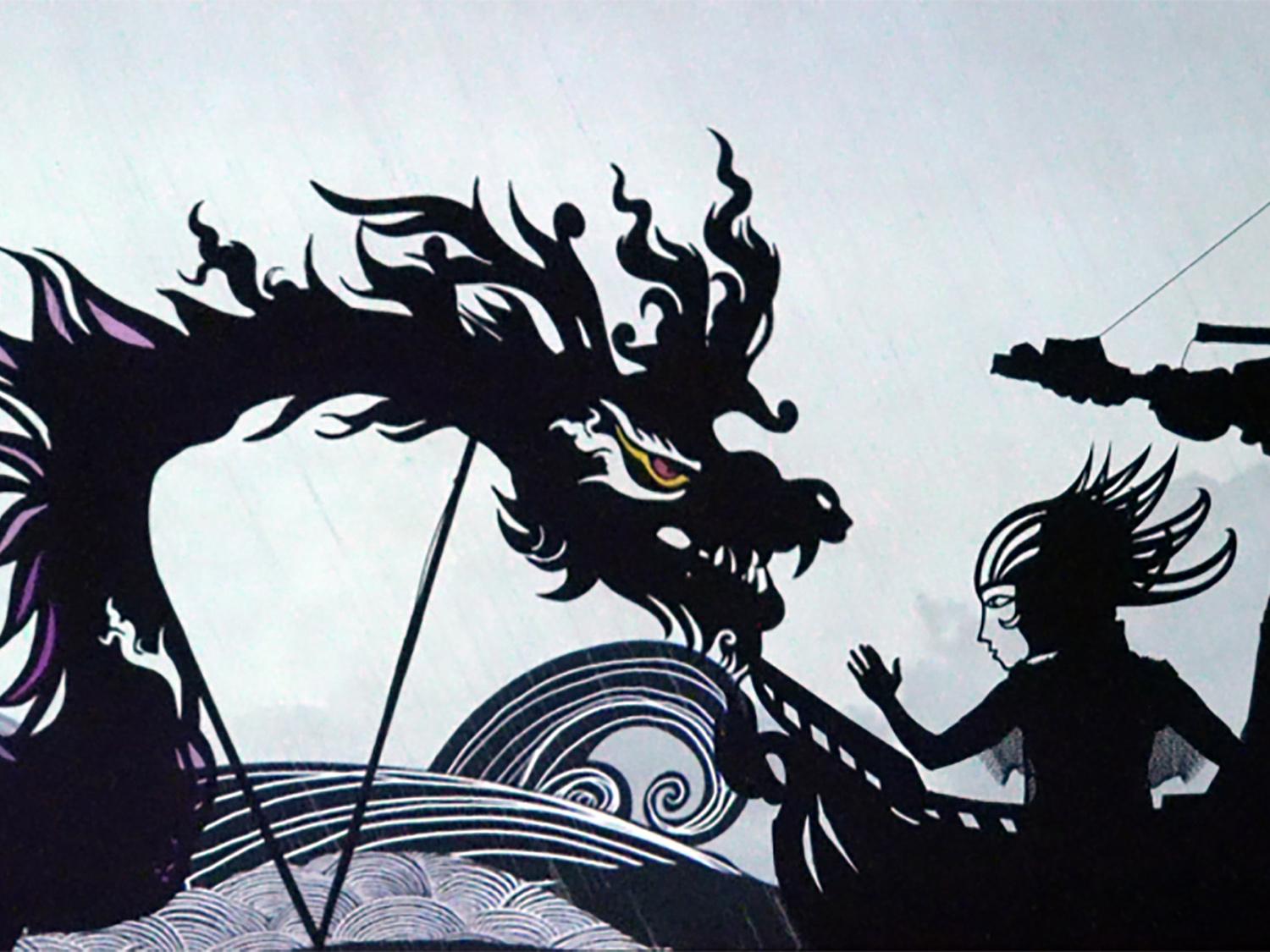
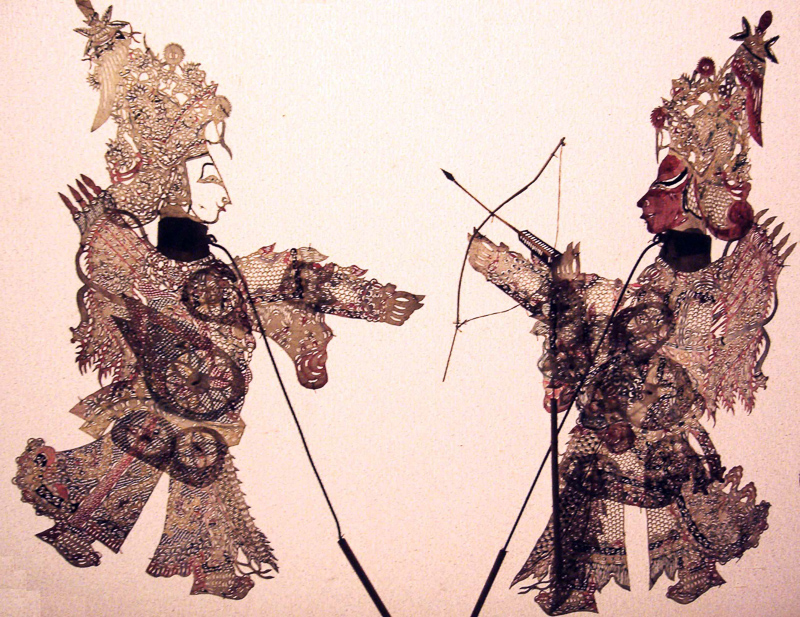
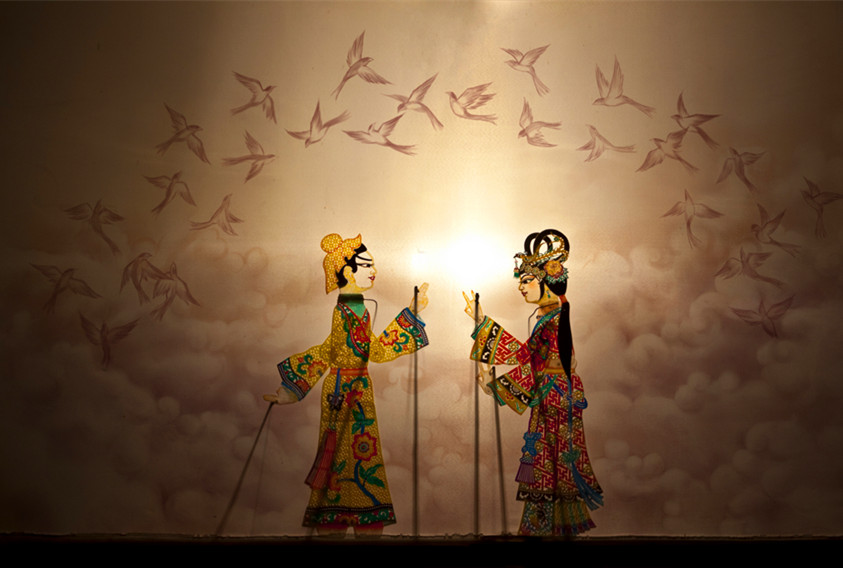
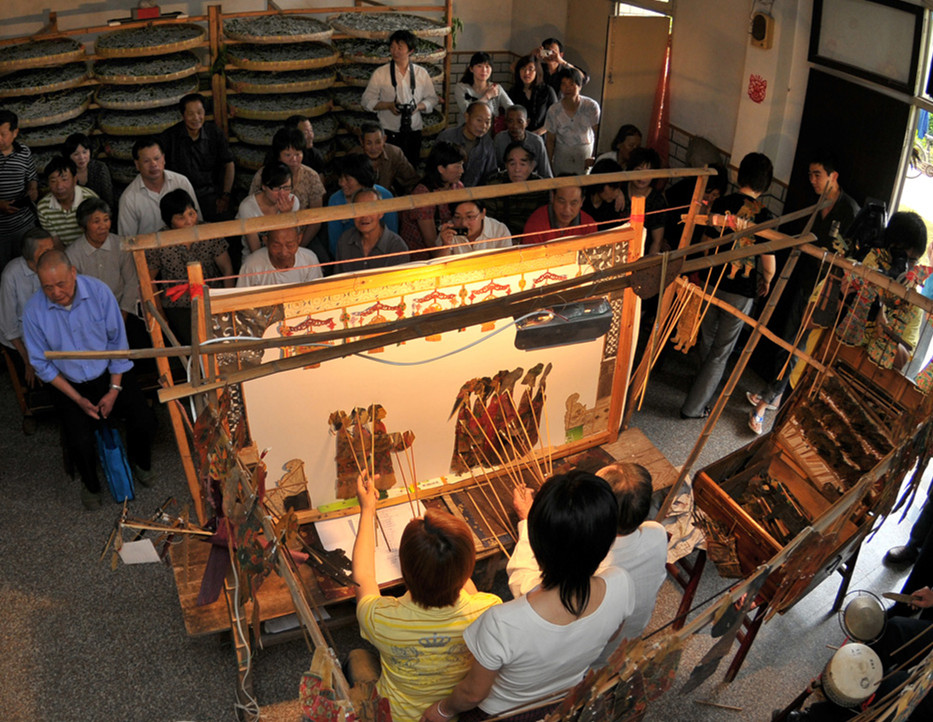

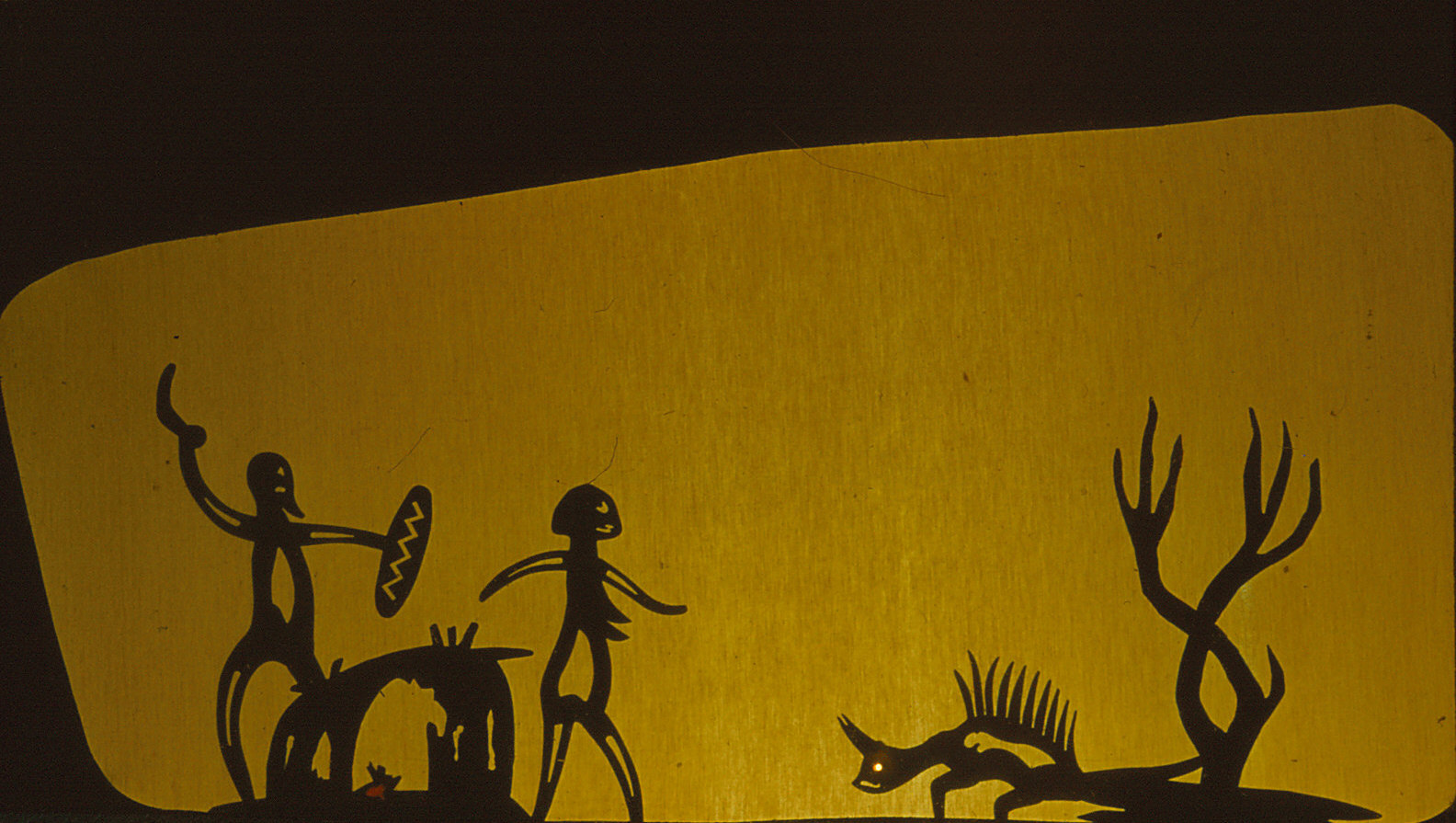
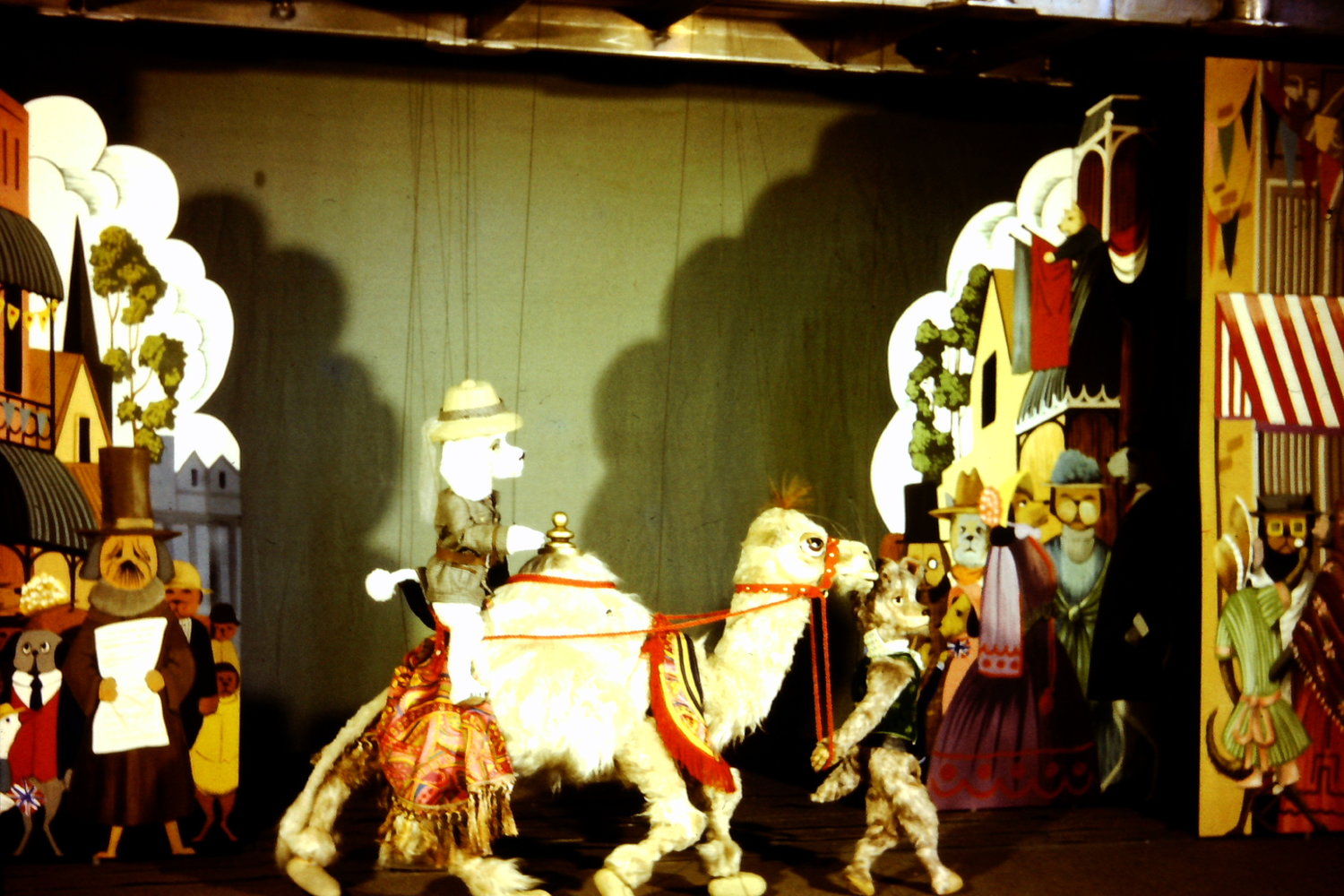
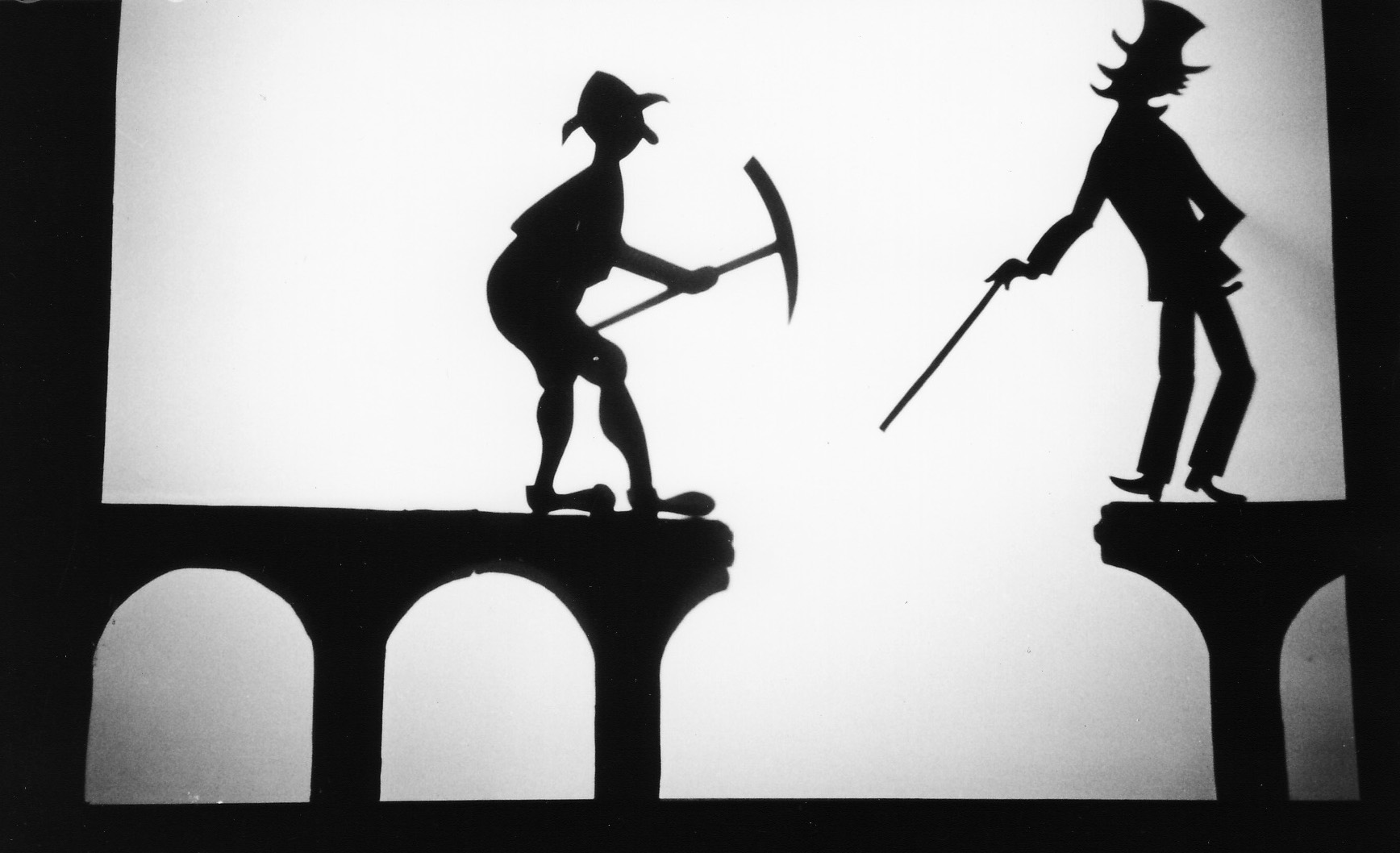





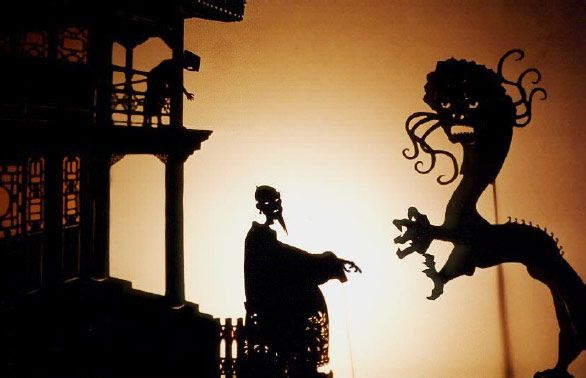








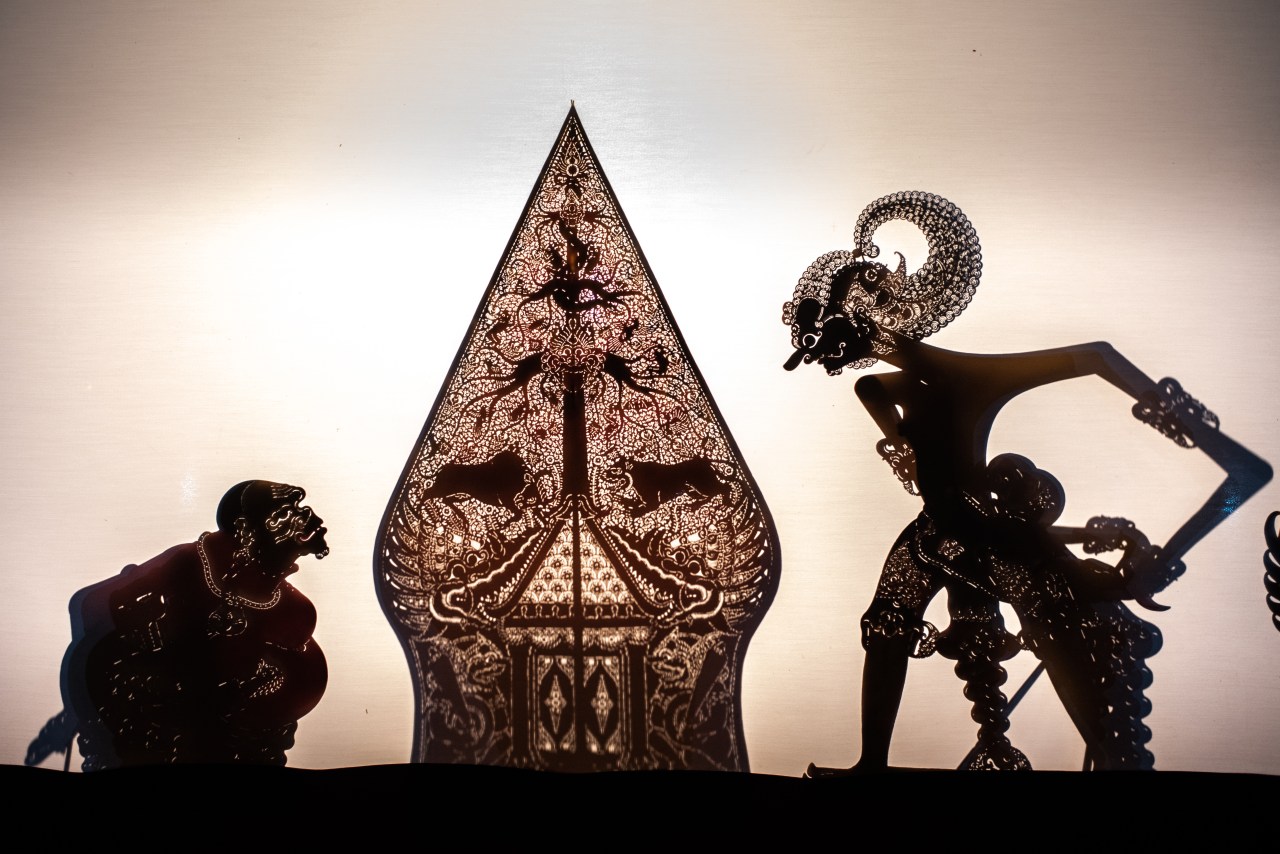

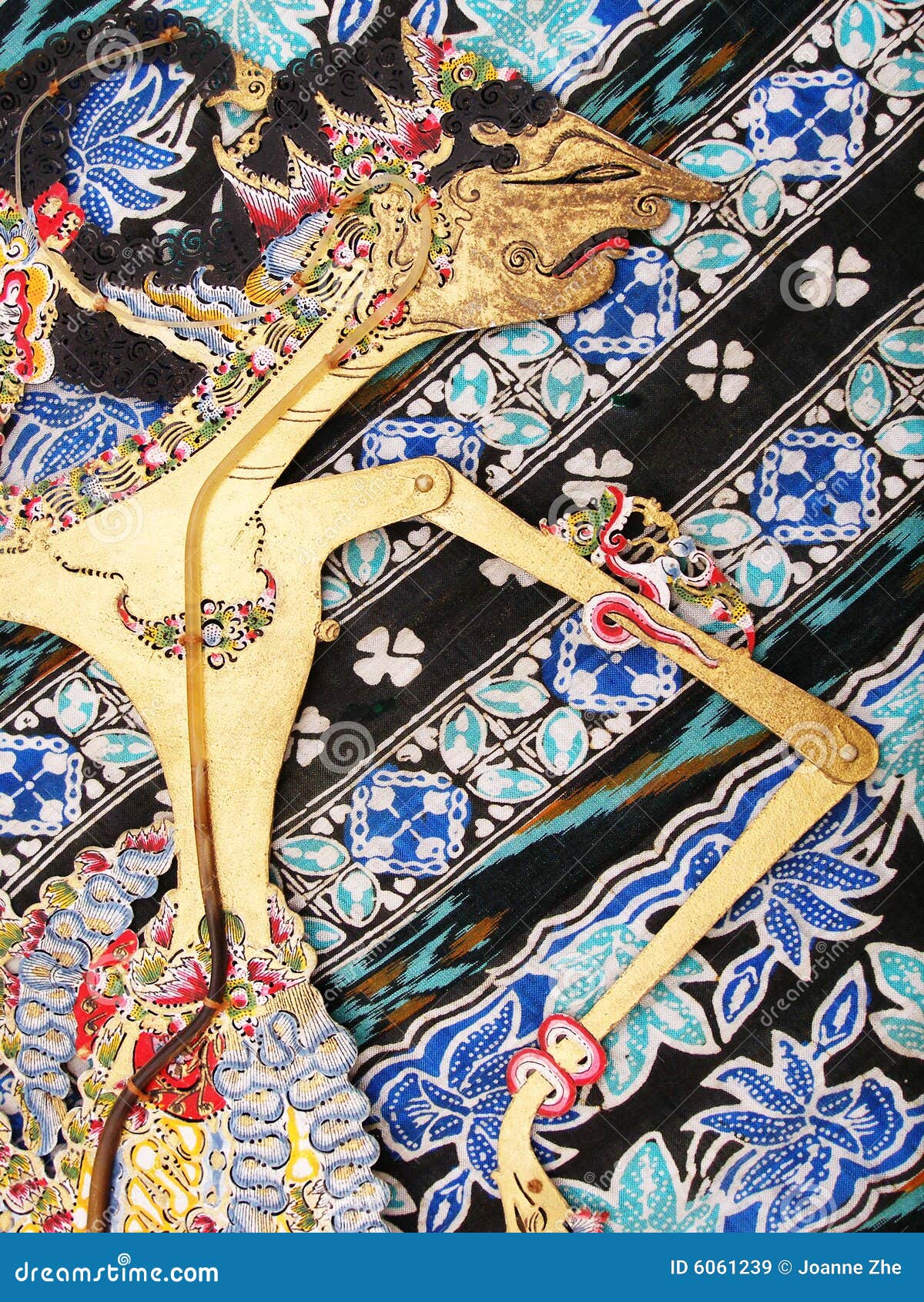


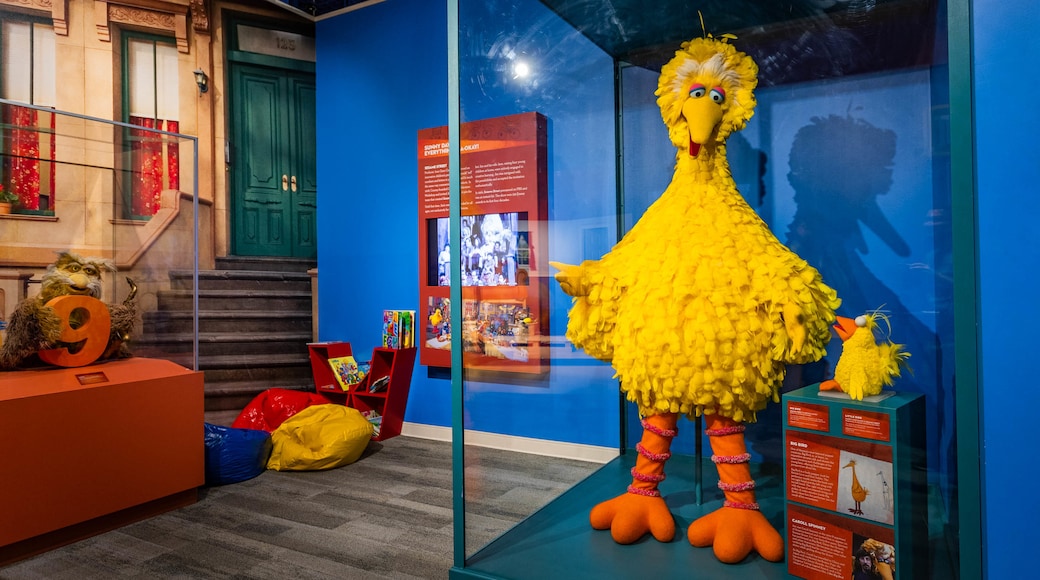
Comments
Post a Comment